Concepts like freelancing and the gig economy have never been more popular than they are right now, in a business world still reeling from the shift to remote work.
Top companies everywhere are taking advantage of outsourcing because it allows them to complete projects faster, with fewer investments and with better results than previously possible.
Since technical writing is so well-suited for outsourcing, it would be a shame to miss out on the many benefits that can be gained using this business practice.
Don’t worry, though, we’re here to help.
In the following paragraphs, we’ll tell you all about the advantages of outsourcing technical writing as well as provide you with actionable tips to get you started.
Let’s go!
Benefits of Outsourcing Technical Writing
Enlisting a person from outside the company to take care of your documentation may seem scary at first.
After all, this isn’t someone who has participated in the development of the product, so can they really do it justice in the documentation process?
The truth is that external writers can contribute high-quality documentation that’s just as good as the documentation written by your team—provided you’re working with the right writers.
Not only that, but outsourced documentation can be more cost-effective and efficient to create, and it scales more easily for fast-growing companies.
Let’s have a look at the benefits of outsourcing technical writing in more detail.
Better Value for Money
Our first benefit can be applied to all sorts of outsourceable work and is purely economic in character.
Putting new workers on the payroll is extremely expensive. Wages are burdened by taxes and insurance costs, meaning you’re paying for much more than the work you’re getting back.
With outsourcing, expenses are much lower.
In fact, data from 2018 shows that vendor rates can vary a lot from in-house wages and make enormous strides in helping companies keep costs low.
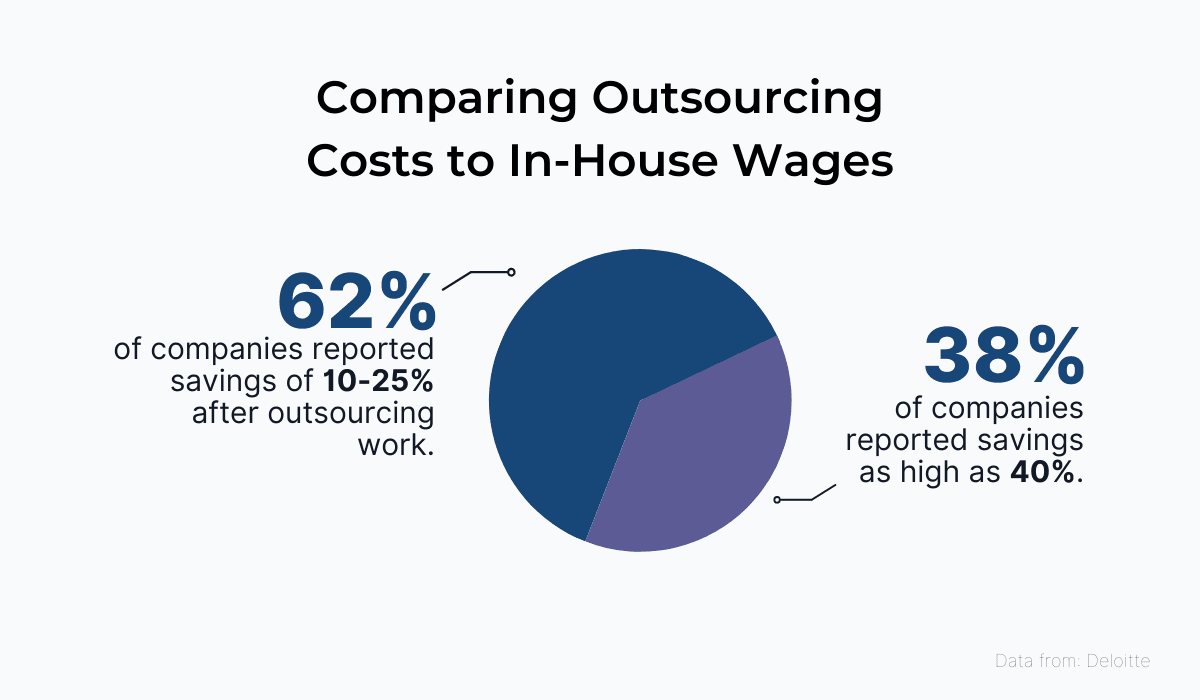
Source: Archbee
And the savings don’t stop with these direct costs. Keep in mind that every employee needs to be trained and managed, which means that employees can incur costs that aren’t tied to payroll.
These costs can include:
- Onboarding
- HR representatives
- Office space
- Access to hardware and software
Of course, this doesn’t mean that the best course of action is to outsource entire teams.
However, there’s definitely merit in keeping the size of your technical writing team under control and combining the stability and dependability of your internal team with the financial gains you stand to achieve by outsourcing a part of the technical writing work.
High-Quality Documentation
There used to be a lot of uncertainty tied to outsourcing work.
Employers didn’t have the benefit of asking for references and thoroughly testing candidates before being completely sure that someone was the right fit for a job.
Things are much different now.
With the rise of freelancer platforms, companies can hand-pick the greatest experts in the world and rely on customer reviews and comprehensive portfolios to help them decide on a perfect technical writer for their team.
Consider Fiverr, for example. This platform has systems in place that will put you in touch with verified experts from all over the world and guarantee a high-quality service.
These systems come in the form of customer ratings and a unique vetting process whereby freelancers can apply to be hand-picked as pro-verified professionals offering the best service available in their space.
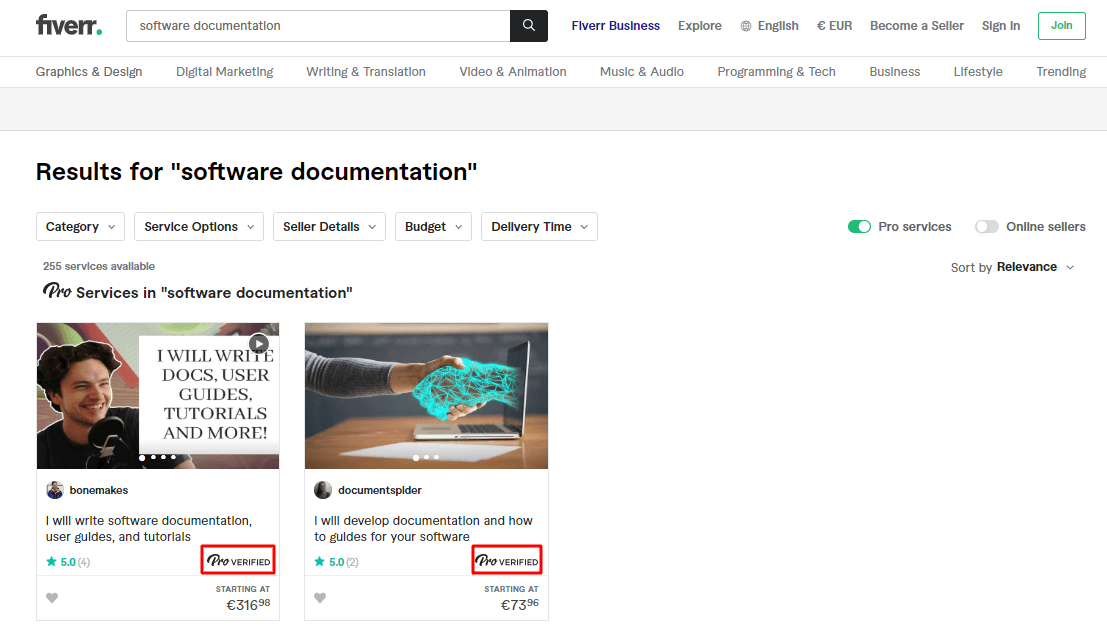
Source: Fiverr
This is especially useful for startups or companies that are implementing technical documentation for the first time.
It’s easy to see why.
Companies that have little experience with technical writing cannot expect to hire quality experts and establish an efficient technical writing process on their first try.
However, by outsourcing this part of the work to the right professionals, they can expect high-quality results on time, every time.
To sum up, contrary to popular belief, outsourcing work doesn’t have to mean sacrificing quality.
In fact, it could result in a better product than you would have thought possible using only your in-house team.
More Focused Writers
Developing software in a startup environment sometimes means that one expert will be responsible for multiple types of work, even tasks they’re not trained or experienced in.
Technical writing often suffers from this kind of multitasking.
While large companies usually employ teams of technical writers, startups and small companies have developers and other staff carry out the work of documentation.
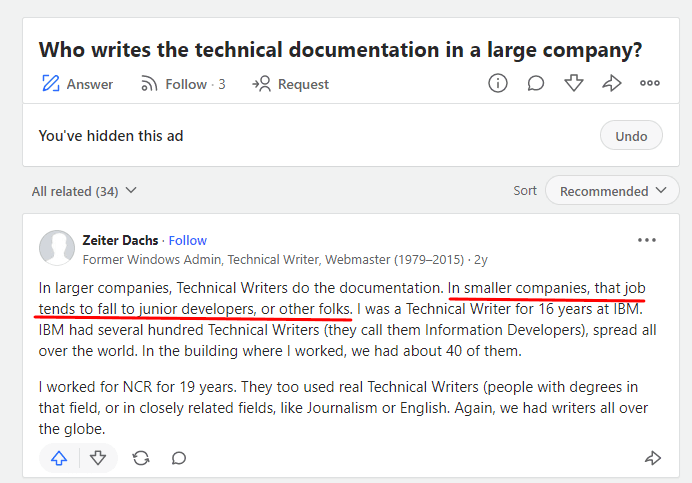
Source: Quora
And while this may seem smart from a resource-saving perspective, it can actually be quite detrimental to your product and user experience.
Furthermore, it’s probably also going to be harmful to your work culture because employees won’t appreciate you forcing them to do work they’re not qualified for or interested in.
As Andrés Reales, blogger and senior full-stack developer, explains:
“Many programmers view the task of writing documentation as a necessary evil. After all, it’s often seen as a waste of time that could be better spent coding.”
Thankfully, there is a third option: outsourcing technical writing.
We already talked about how outsourcing this kind of work can be a major resource-saver, so there’s no merit in the argument that small startups can’t afford documentation.
The other benefit is that outsourced writers will be able to focus on technical writing, and they won’t see it as a secondary, less-important task they hate doing.
And that is sure to result in better documentation that’s not going to frustrate your users or pull away your developers from their work.
Greater Scalability
A great thing about outsourcing work is that it makes you incredibly agile in your work. This goes for both outsourcing through employing freelancers or using an agency.
Let’s imagine a scenario where your work suddenly expands, and you suddenly have a greater need for technical documentation.
Maybe your product is ready for market sooner than expected, maybe you need to overhaul your knowledge base because your current one is generating negative feedback from users.
Either way, if you’re outsourcing your work to an agency, you can simply request them to add more writers to your team.
Technical writing agencies employ multiple professional technical writers, so they’ll be able to easily expand the work on your project.

Source: 3di
If you’re working with freelancers, you can go to your platform of choice and fire off some offers to freelancers with a proven track record.
In both scenarios, documentation is kept on track and you won’t miss a beat.
In opposition, if you’re doing all of the documentation in-house, you’d have no choice but to hire new writers if your writing team is already at capacity.
And that can take ages.

Source: Archbee
That’s what we mean by scalability. When you’re working with freelancers or agencies, you can easily scale the technical documentation you’re creating because adding new writers to your project is easy.
However, if you only want to work with internal writers, it may take you at least a month before you can amp up documentation.
And all the while, your projects are at a standstill because you can’t go to market without quality documentation.
Tips for Outsourcing Technical Writing
Hopefully, our discussion of the benefits of outsourcing technical writing has convinced you that this is a sound business option to explore.
Now, let’s turn to some practical tips that will help you ensure an efficient and profitable technical writer outsourcing process.
Seek Writers With Experience in a Similar Industry
It should be obvious that hiring an outsourced writer will entail some degree of onboarding.
After all, a newcomer to your project will have to be briefed on the details of your project and told what your expectations are.
This onboarding process can be reduced significantly if the person you hire already has ample experience working on documentation within your industry.
It’s only logical.
A writer with experience in your industry already knows the characteristics of your audience as well as the documentation demands of the type of product you’re offering.
For example, if you’re launching an API for your software, it should be easy enough to find API writers on freelancer platforms.
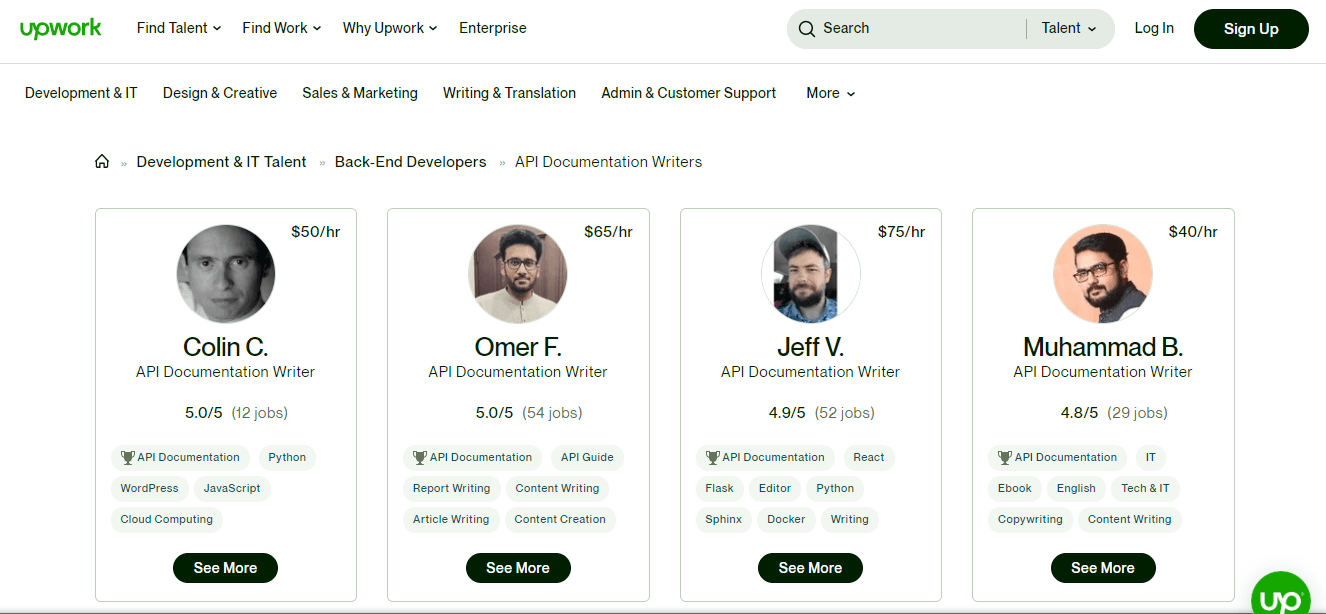
Source: Upwork
Documenting APIs is a very specific type of technical writing.
One that requires a high level of expertise in programming languages and usage of advanced documentation software, such as Archbee, that allows them to input code and other resources into the documents.
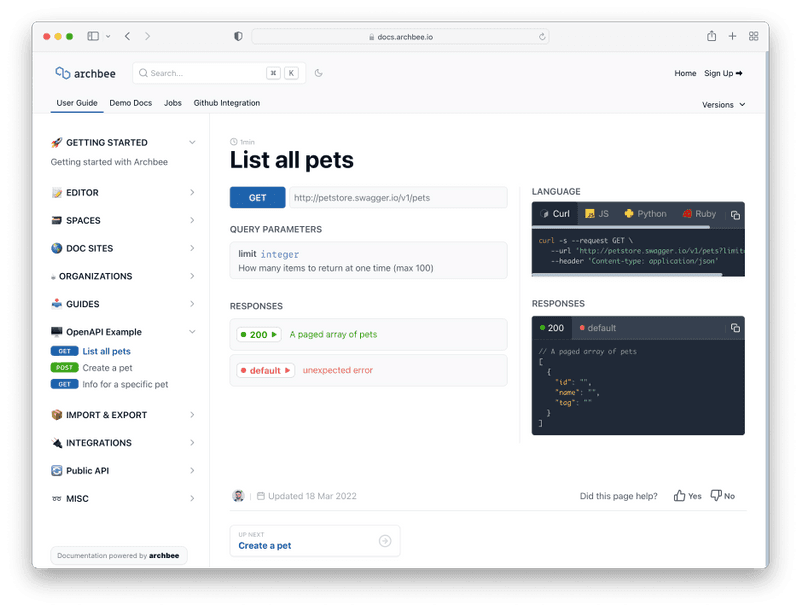
Source: Archbee
So, in many ways, you’ll only have access to the benefits of outsourcing we talked about in the previous section if you hire writers who are well-versed in your industry.
These are the writers who can bring real quality to your documentation and you’ll be able to deploy them almost immediately, without an extensive onboarding period.
Communicate the Requirements Upfront
A major problem can arise when clients and freelancers or agencies don’t communicate effectively.
Misunderstandings and wrong assumptions can be very harmful to both the resulting documentation and the reputation of the freelancer or agency since customer reviews are very important for acquiring new work.

Source: Fiverr
A lot of this friction can be easily avoided if you just take the time to communicate the details of the job and your expectations before any kind of work even begins.
So, once you decide on the person or people to whom you’ll be outsourcing the work, make sure to discuss every element of the work, such as:
- What type of document you need them to create
- The deadlines for each phase of the job
- The style you would like the document to be written in
Let’s take that last point as an example.
If you don’t provide your contractor with information about naming conventions, preferred outlines for articles, and details such as voice and style of writing, you can’t expect the resulting document to reflect your brand and the standards of technical writing you prefer.
A good practice to follow in this case is to send the freelancer or agency a copy of your house style guide or a link to your preferred manual of style for technical writing.
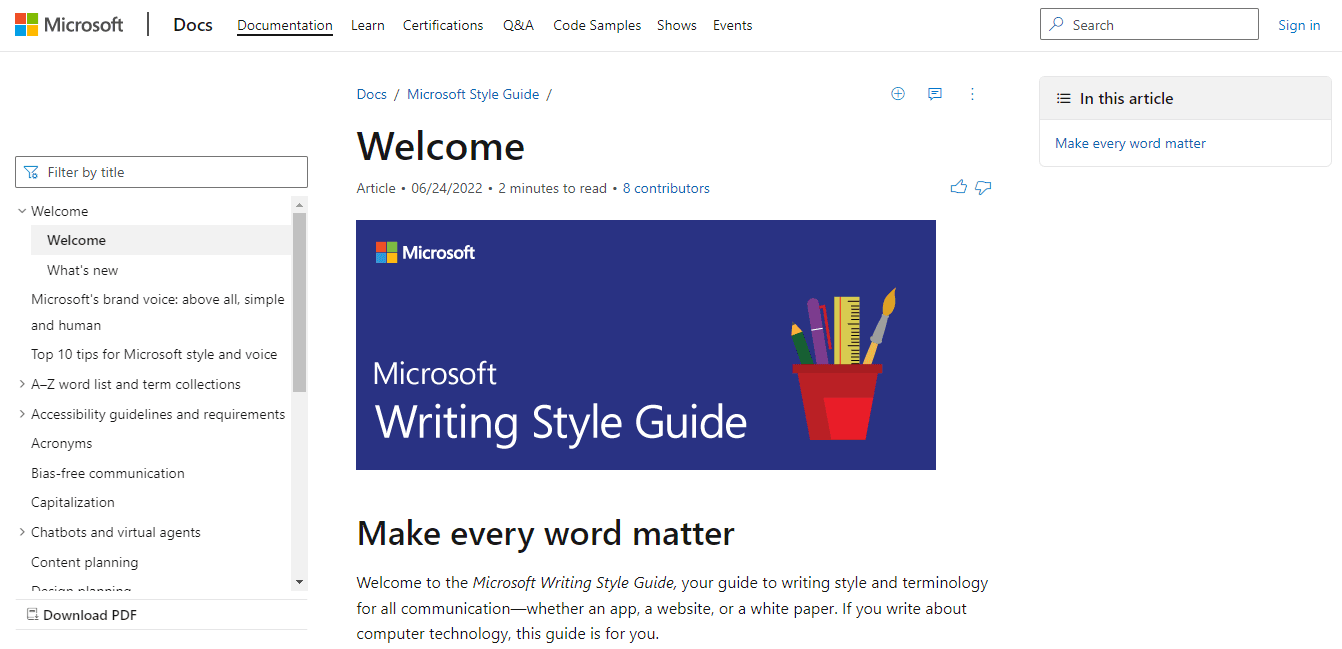
Source: docs.microsoft
Remember, when everyone is on the same page, it becomes very difficult for mistakes and misunderstandings to occur, and you’re much more likely to be happy with the end result.
Share Enough Information About Your Product
To build on our previous point, we should also mention that you’re much more likely to be satisfied with the outsourced documentation if the freelancer has access to as much information about your product as possible.
Freelancers themselves often only want to work with clients who come well prepared and can supply them with enough materials about the products they will be documenting.
Anything else can result in a lot of frustration and even an open conflict between client and contractor.
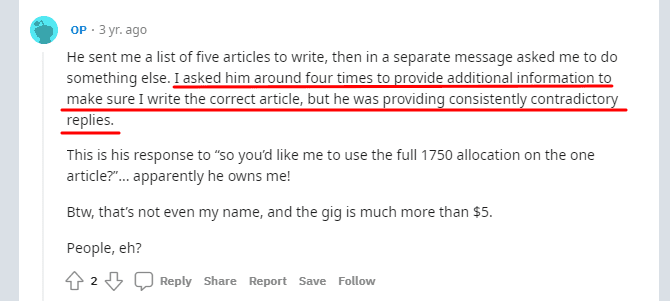
Source: Reddit
If you’re at the stage where you need to start producing documentation, you should already have a good amount of materials that you can share with your writers, such as marketing materials, product descriptions, and existing documentation if it’s available.
If your documentation isn’t public yet, it would be a good idea to use documentation software that will allow you to share your internal documentation with external parties, such as outsourced staff.
Archbee lets you customize the accessibility of each of your documents and it even has a magic link option to let you share individual documents and provide access with just an email address.
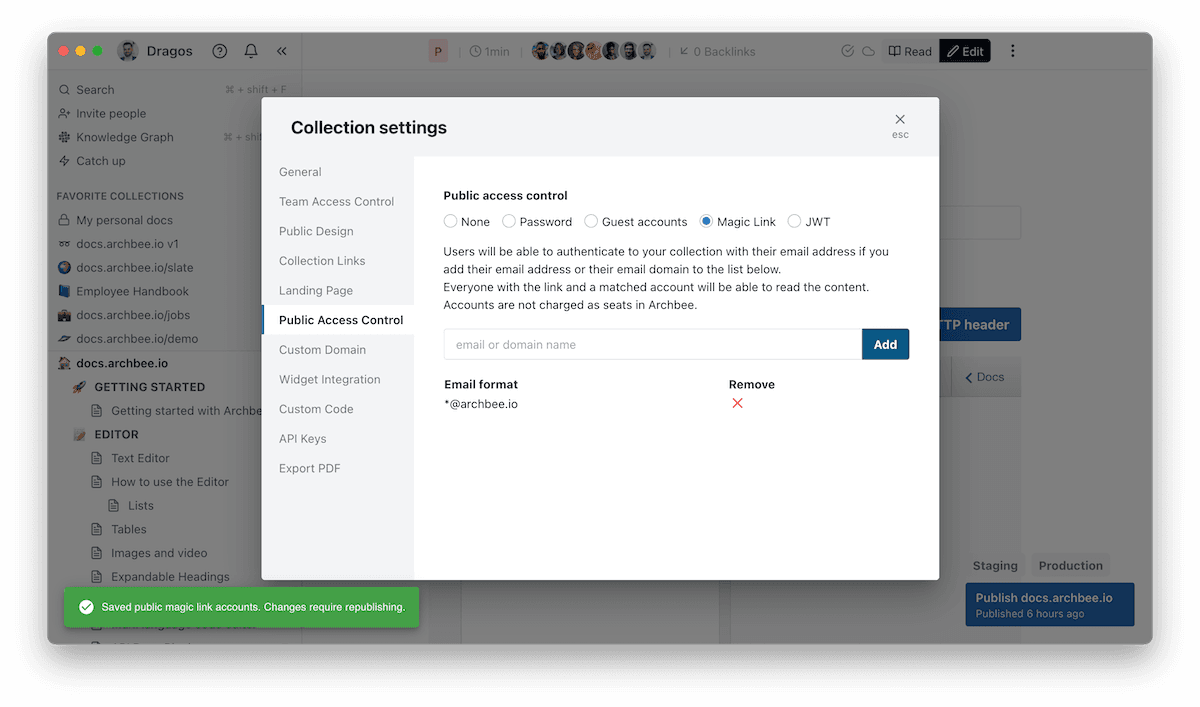
Source: Archbee
And you can even go beyond that by putting the writer in touch with the subject matter experts (SMEs) working on the project in case they have any questions about the product.
As external writers aren’t directly involved with your project, providing access to experts with first hand experience will definitely help.
The more information you can provide, the better the resulting documentation will be, so give this aspect of your relationship your full attention.
Start the Cooperation With a Smaller Project
Our last tip is to start your collaboration with an outsourced writer slowly.
You should really take this one to heart because trusting an unknown professional with a big project can end up very badly for all parties involved.
It’s the only rational thing to do, if you think about it.
No matter how qualified a technical writer is, without some hands-on experience working on your projects, you have no way of really telling if they’re the right fit for your project and the entire brand.
So, instead of dumping the task of creating, for example, an entire knowledge base for your product all at once, why not start with something smaller, like a “Getting Started” guide?
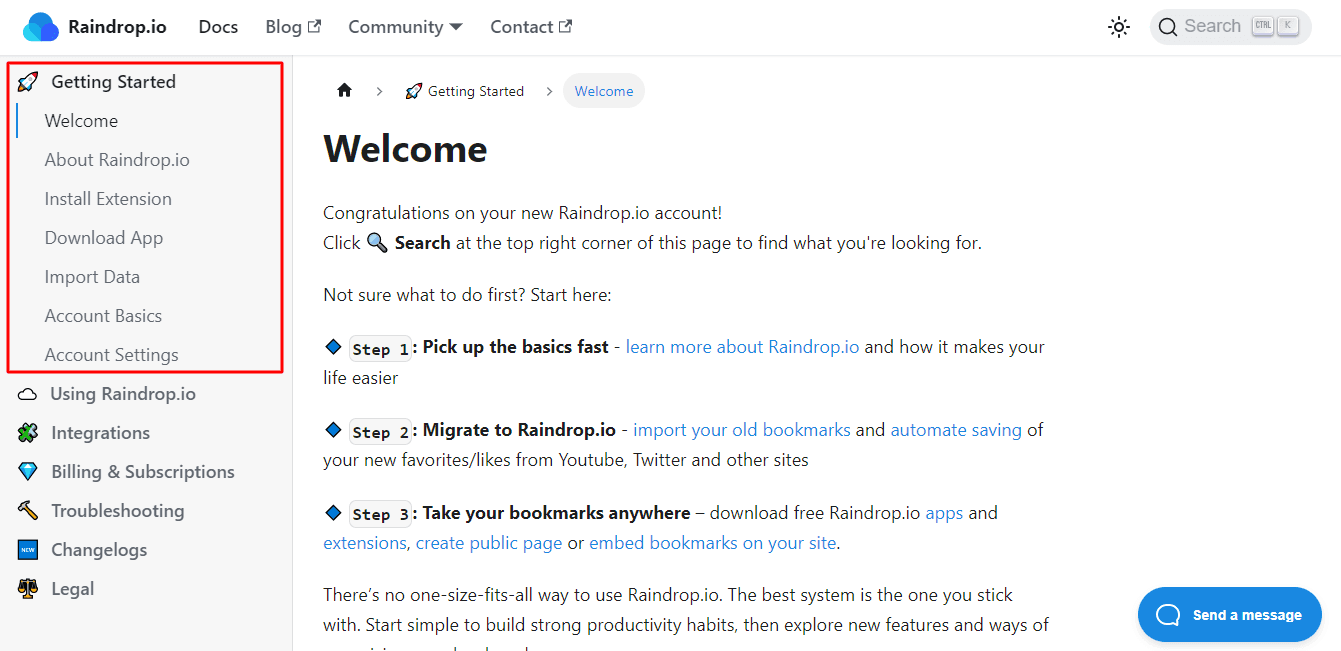
Source: Raindrop.io
This is the most basic part of your documentation, so it shouldn’t take as much knowledge and time to create.
However, it should be enough to tell you a lot about your writer’s capabilities, such as their:
- Writing skills
- Understanding of audience needs
- Knowledge of documentation practices and principles
- Uptake of your project and its specifics
If you’re completely satisfied with the results of this smaller gig, you can go ahead and deepen your collaboration by assigning more advanced documentation to the writer.
However, this shouldn’t be your last point of contact for the rest of the project.
Make sure you check in at regular intervals to get a progress report from the writer and read (at least) parts of the documentation as it’s being created.
Naturally, working this way is somewhat slower and takes a bit more effort from your side, but it prevents the documentation from going in the wrong direction and provides points along the way for you to make course corrections or even put a stop to the work entirely if need be.
Conclusion
Business has changed a lot in recent years and freelancing and agency outsourcing have become the norm.
In part, that’s because connecting clients to the best possible experts has never been easier, thanks to technology and platforms where professionals offer their services.
In this article, we’ve proven that outsourcing technical documentation can be done successfully and to the benefit of all parties involved.
We’ve also shared some actionable tips that should provide you with a strong place to start when you decide to outsource technical writing to experts outside of your company.
Frequently Asked Questions
Because it helps them move faster, spend smarter, and raise the quality bar. Outsourcing gives access to specialized talent on demand, reduces overhead costs (hiring, training, benefits, tools), speeds time to market, and lets internal teams stay focused on core product work. With vetted freelancers and agencies, companies can maintain high quality while staying flexible and scaling up or down as needs change.



